An optimal vintage for whoever is buying
If this year is defined by a singular emotion, it’s anxiety. That’s nothing new in farming, however I’m talking about anxiety over the abysmal grape market rather than any natural phenomenon. Many of us were so busy scrambling for buyers, we may have forgotten to notice just how great the weather has been. Why wouldn’t we get handed a great year when most of us can’t sell any grapes?
Let’s look at some numbers
My gut feeling was that 2025 was similar to 2023 with a few big differences. 2023 saw some record high rainfall in the winter and early spring throughout California. Even the Paso Robles area got around 21” of rain from July 1st 2022 to July 1st 2023, up from a whopping 6.5” the year prior. That amounted to lots of nice canopy development early in the year and some good yield potential, provided you didn’t get shatter during the chilly springtime. This year however, the Central Coast was back to a measly <7” of rain while the North Coast got upwards of 40”. This made for a more “typical” vintage from the outset with Central Coast growers having to water much earlier in the season than their northern counterparts.
And now let’s look at some graphs
I like looking at how heat accumulates over the course of the season to better understand how one season stacks up against another. The Winkler Growing Degree Day formula allows us to compare different seasons using the same metric. Growing Degree Days (GDD) are calculated by subtracting the grapevines threshold temperature (50°) from the daily mean temperature.
Below are a few graphs from Sonoma County
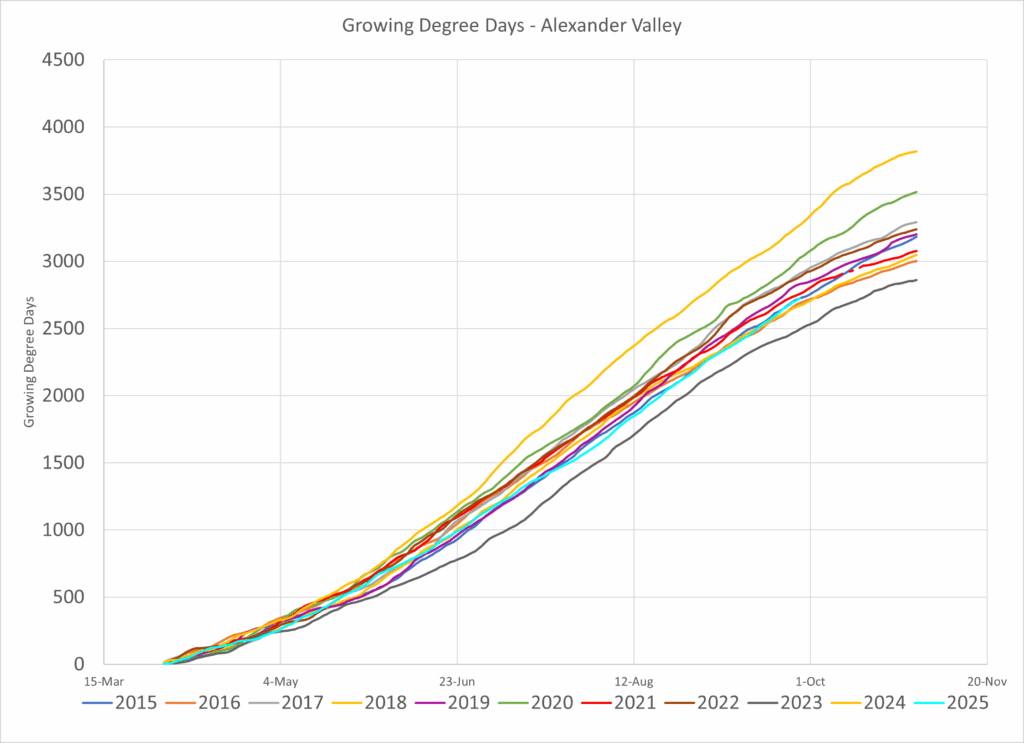
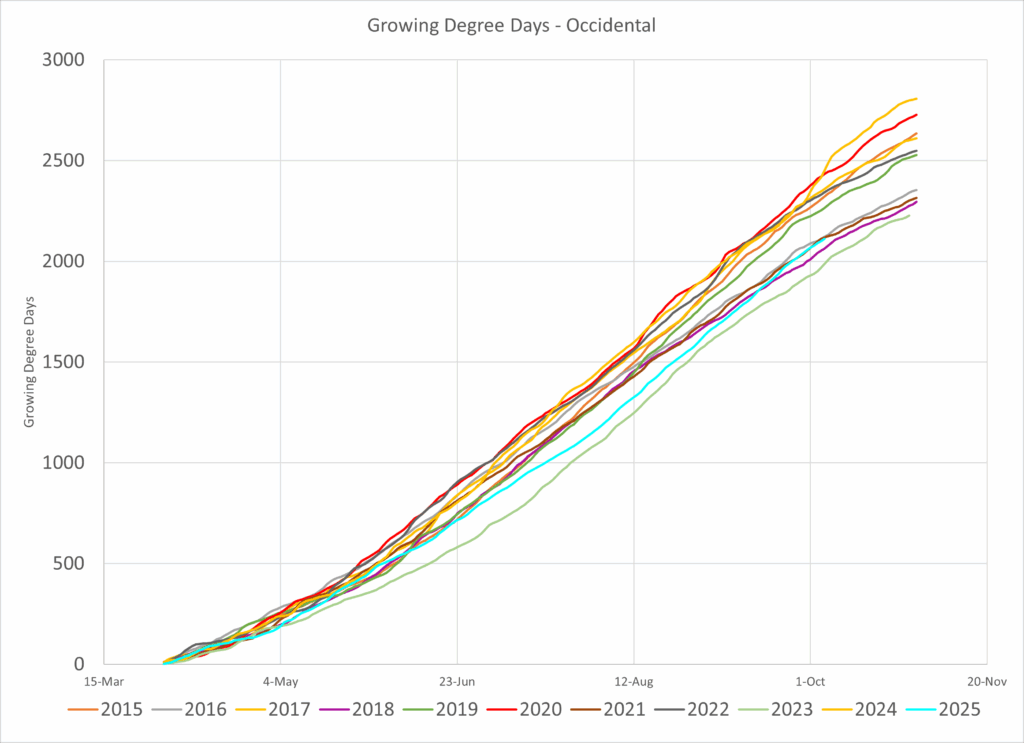
Let’s look at how the season played out in Napa.
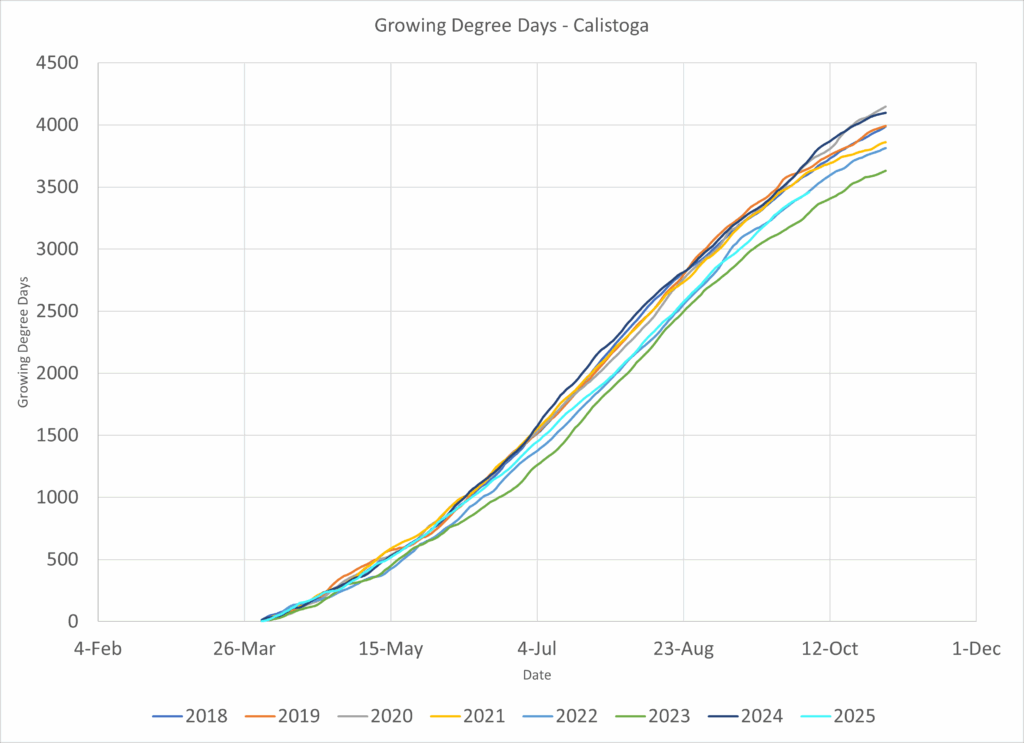
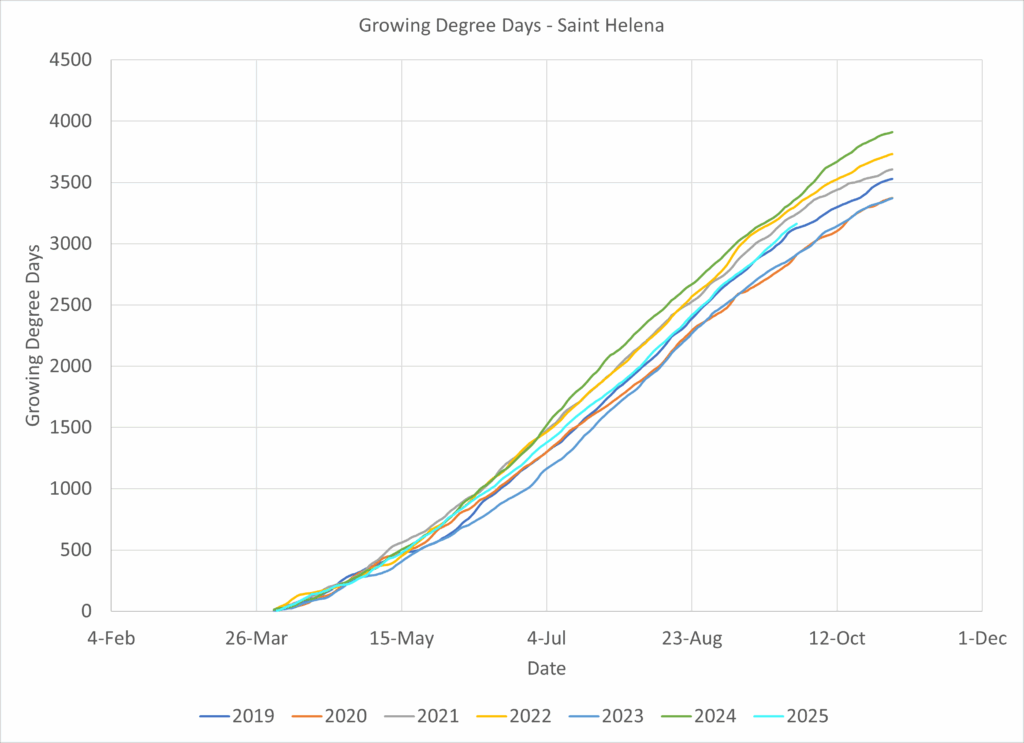
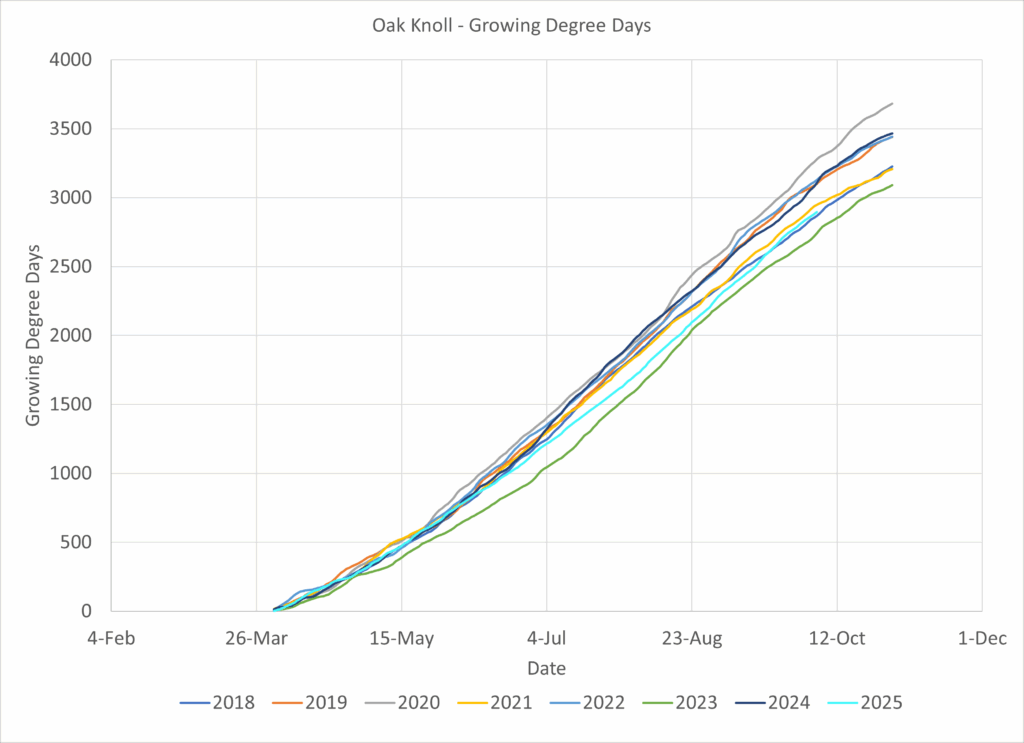
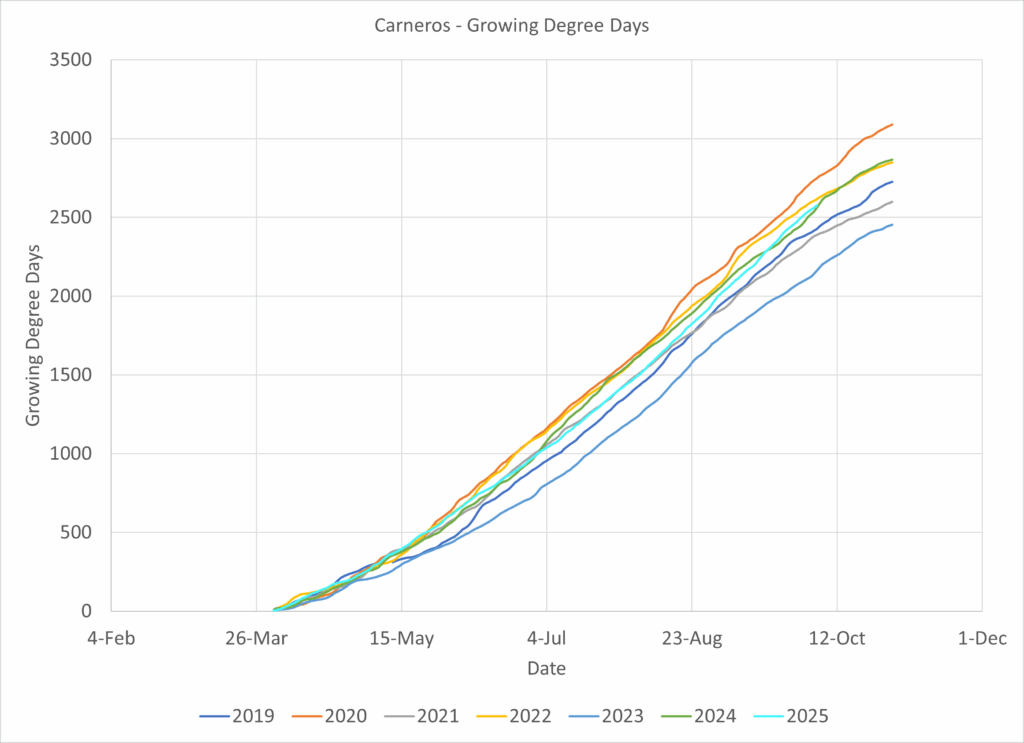
Let’s look at some places in the Central Coast.
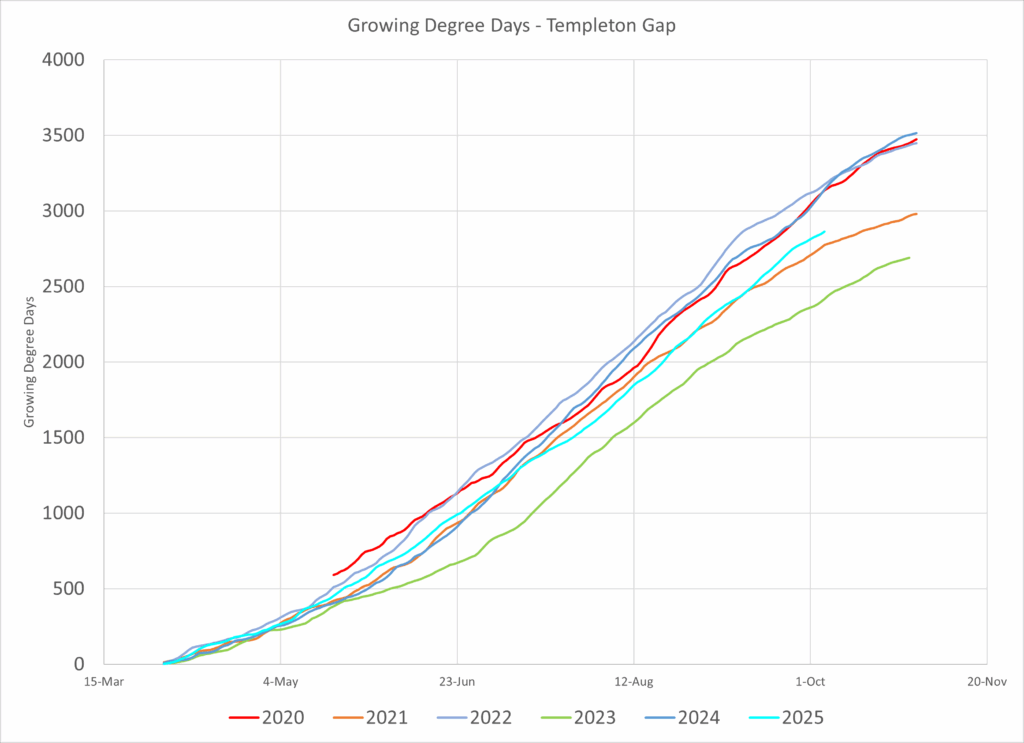
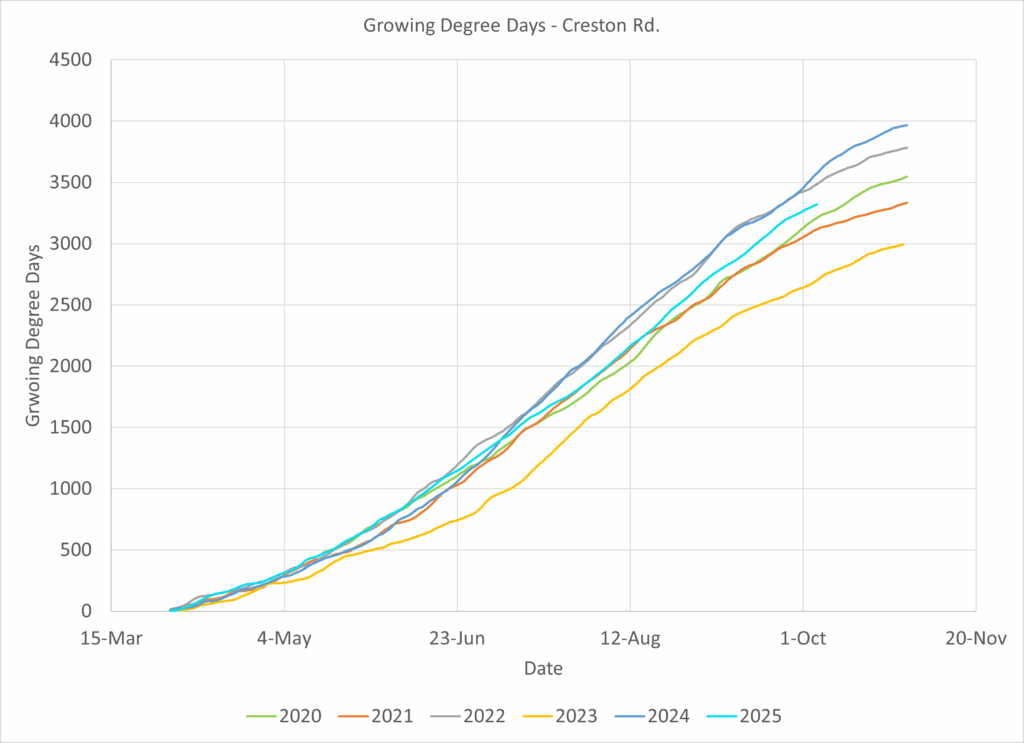
Most notable about these graphs is that the cool spring temperatures that caused a long drawn out bloom period in 2023 was absent. Most growers were able to set some fruit. We didn’t get an early heat wave that got things started just in time to get frosted. That’s nice.
Moderate temperatures, however make for a nasty mildew season. If there’s anything to gripe about…in terms of weather anyway…it was pest pressure. Mildew secondary infection is a function of temperatures and can be charted using the Gubler Thomas mildew model. The image below shows the mildew widget from the AV’s own Avterra portal. Mildew pressure was high throughout the season.

Similar to 2023, what made this year great was the lack of damaging heat waves. This was more noticeable in areas that typically struggle with excessive heat. We did get some warm days, but nothing compared to the hot July of 2024 or the horrendous September of 2022 the latter of which effectively destroyed the vintage for many growers.
The charts below show how summed heat events compare across the last 6 vintages. Here’s the Alexander Valley. While there were a few warm days, there were none above 105°, which is the threshold at which severe damage to vine tissue can occur.
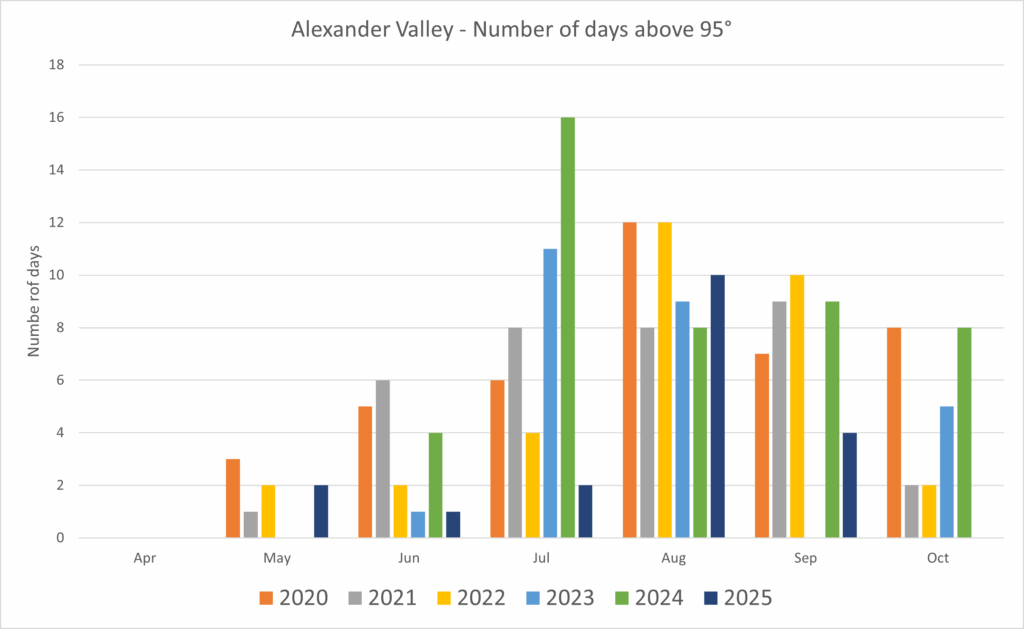
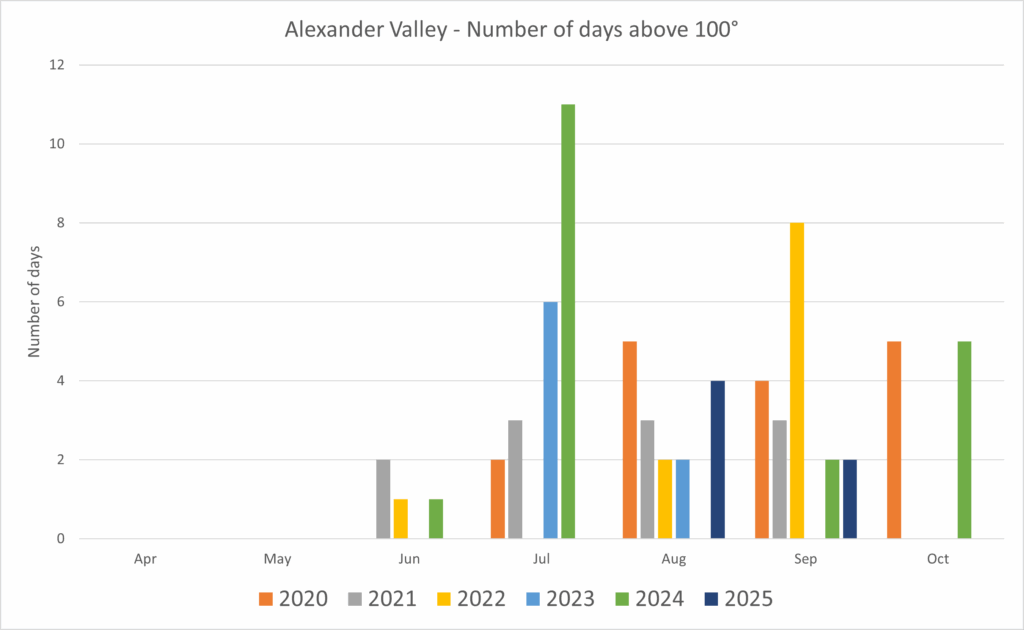
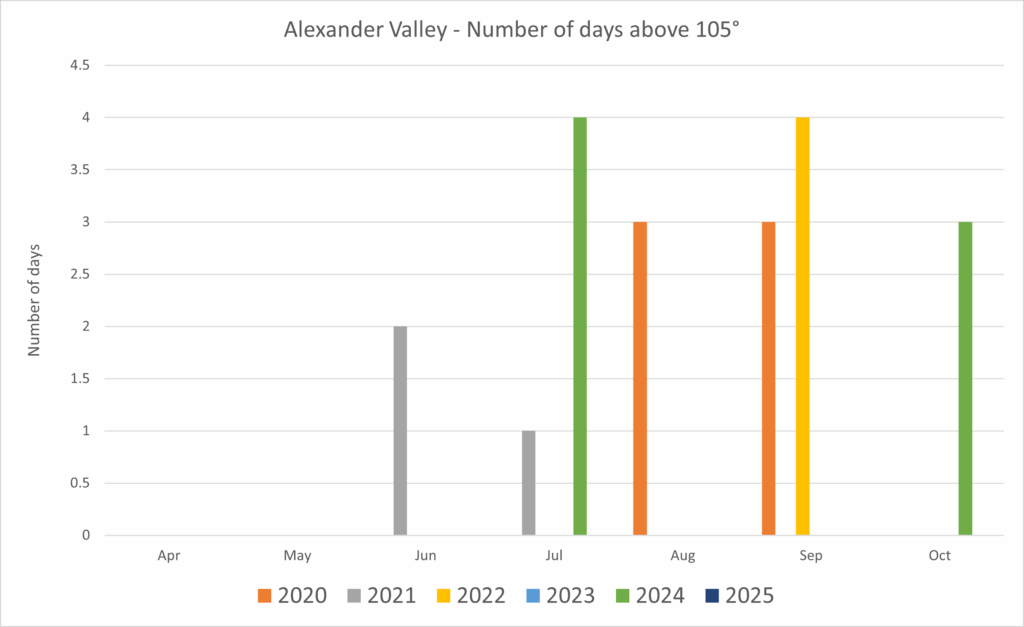
Kenwood, which is more inland showed a similar situation with very few days over 100° and none above 105°.
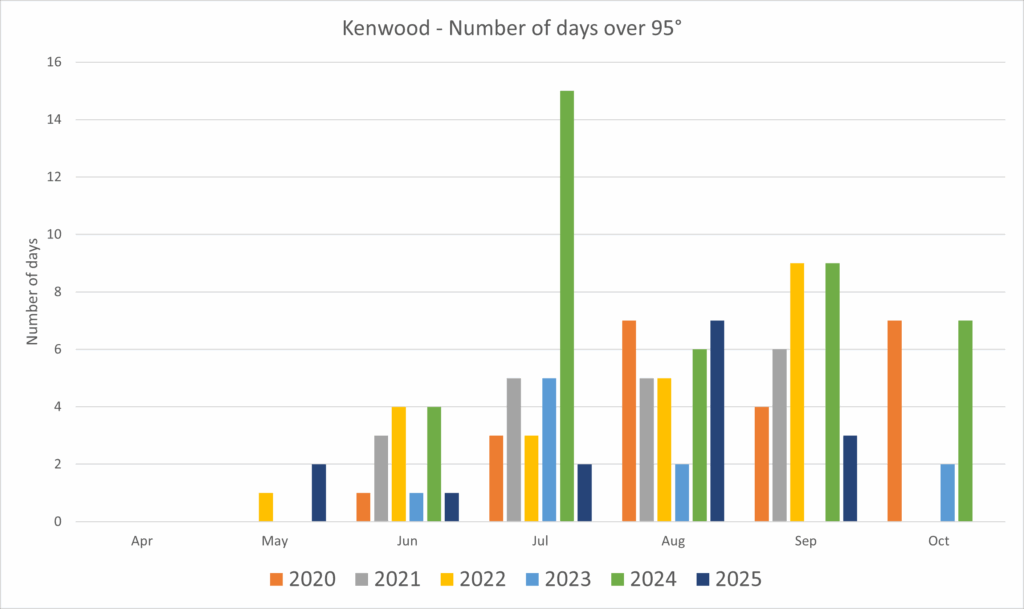
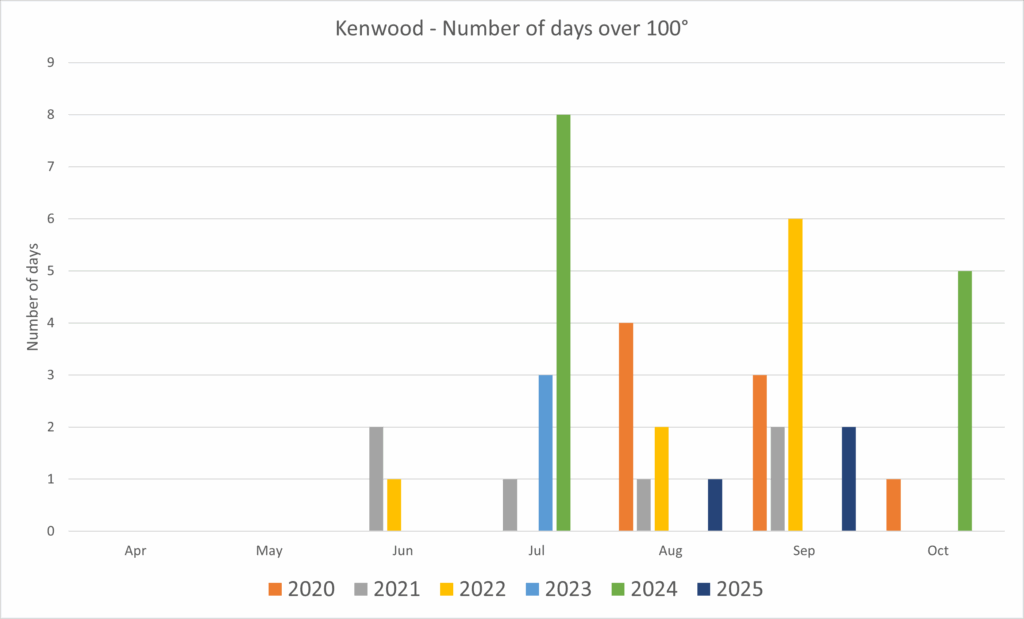
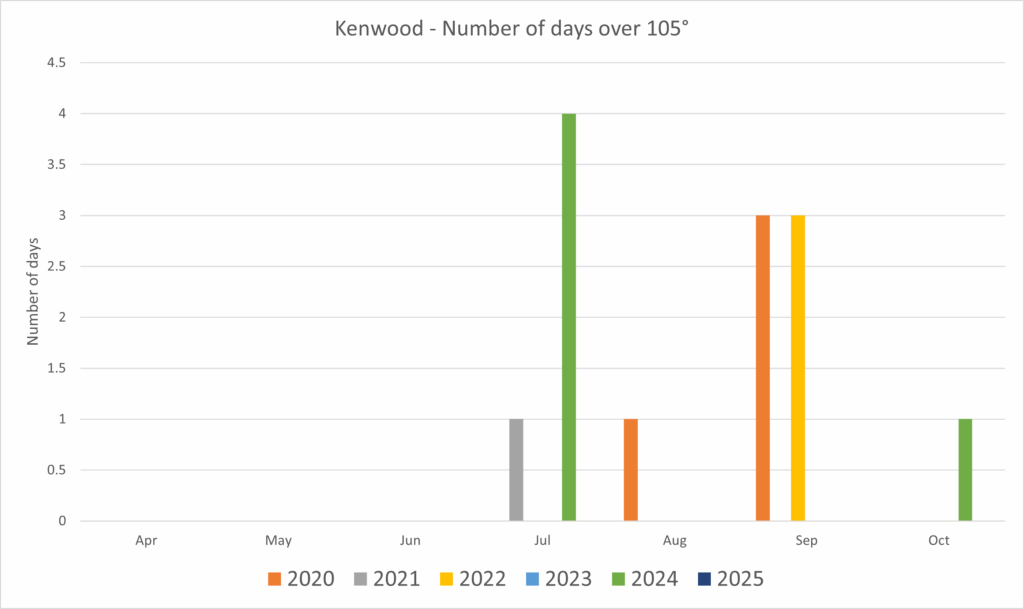
Looking at Napa, Calistoga, which normally suffers at least a few days of excessive heat had no days above 105°.
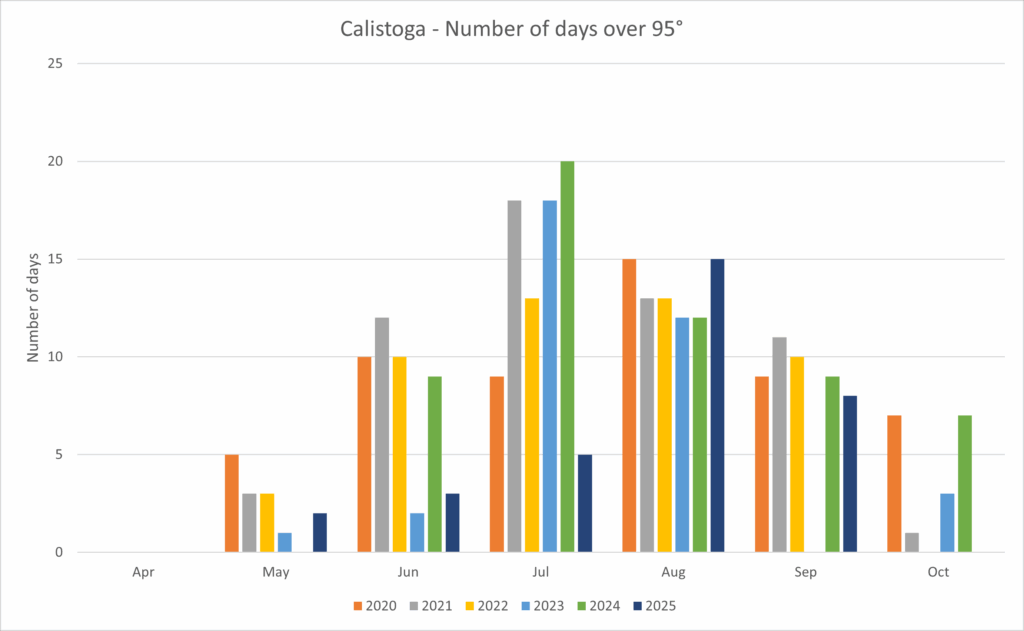
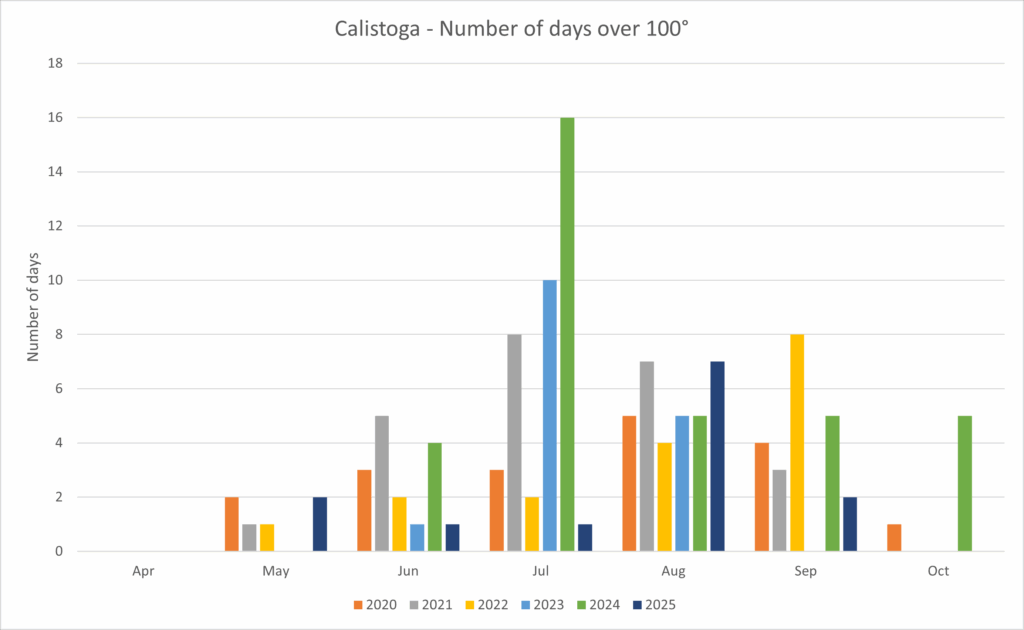
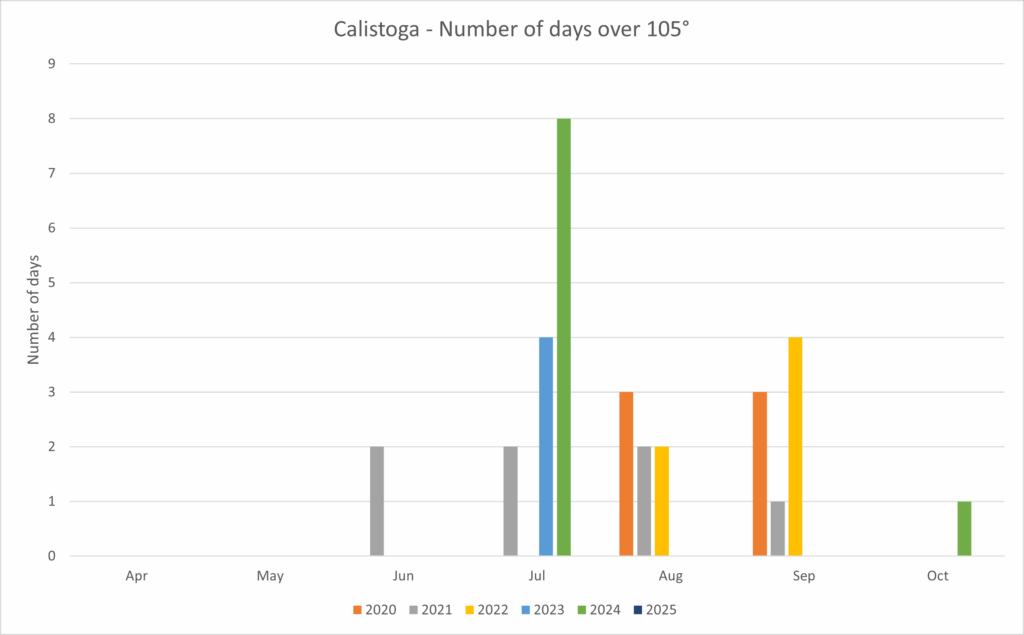
Saint Helena had a couple hot days but nothing compared to the previous year.
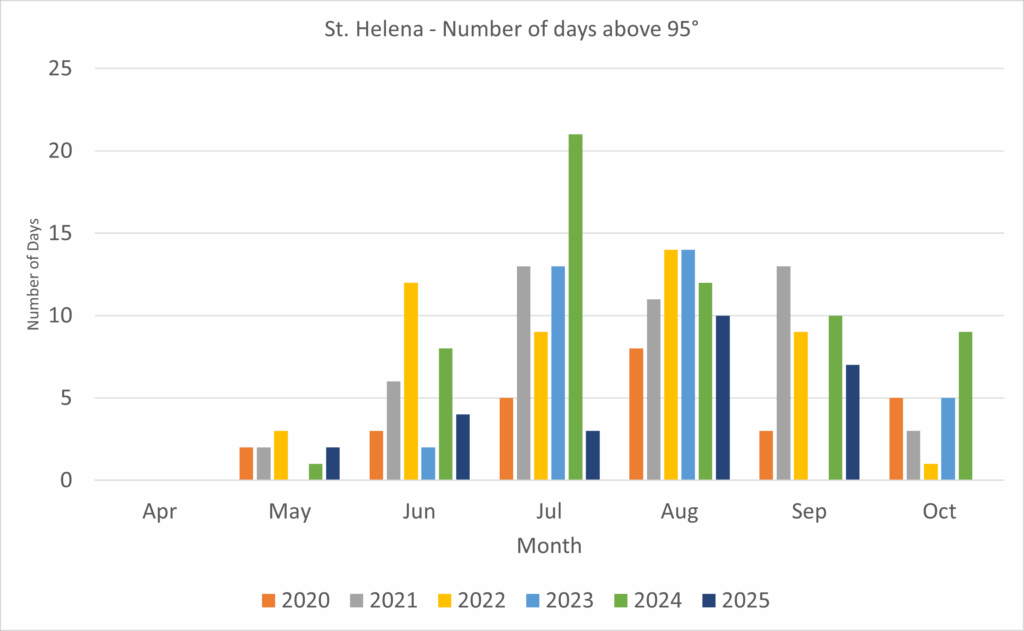
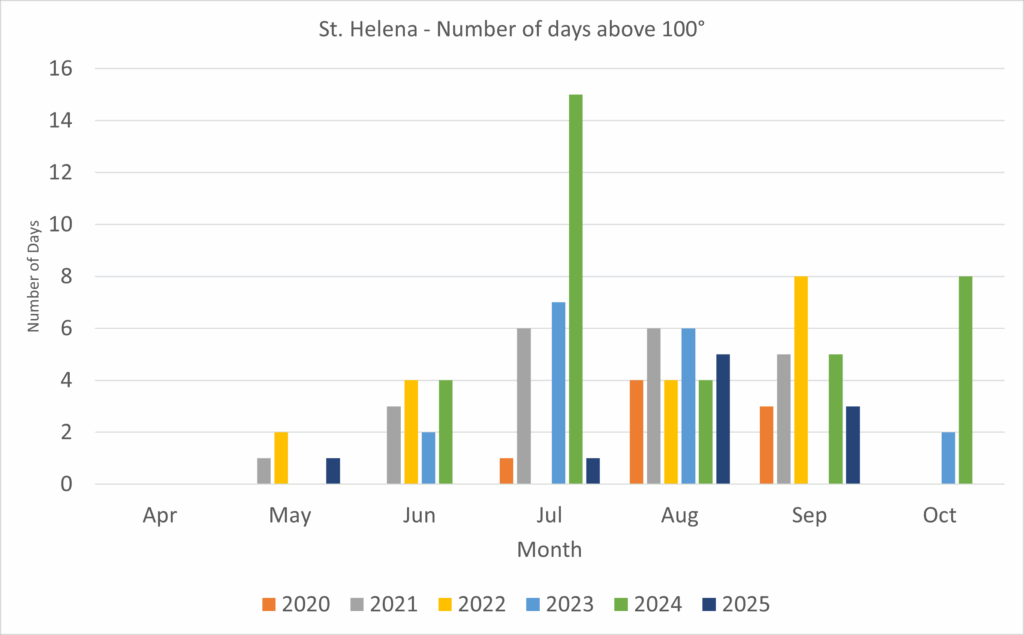
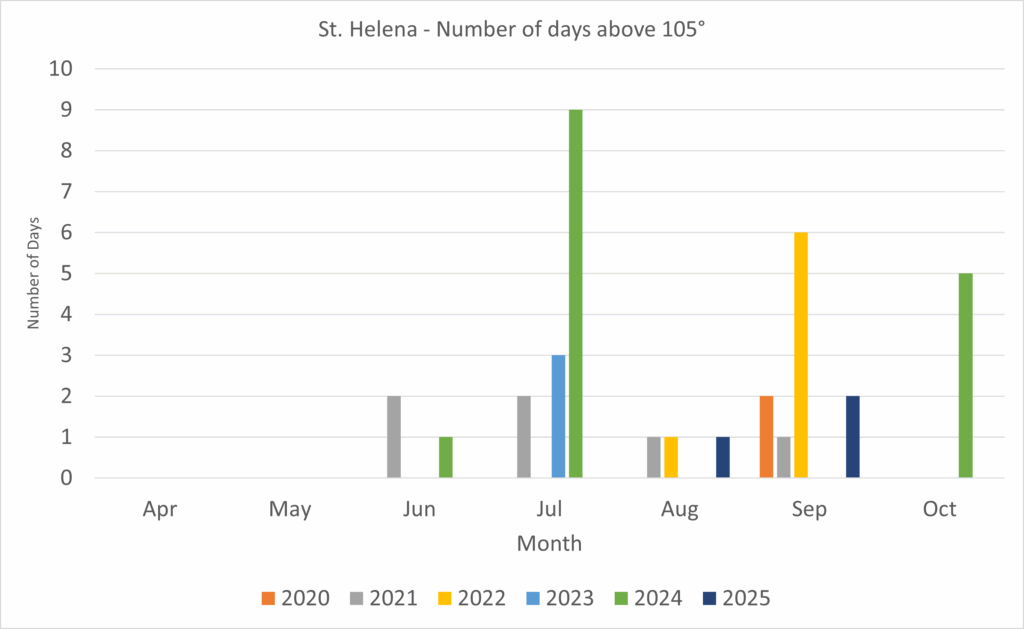
It’s worth noting that these years are considered spectacular in areas where heat events prove year after year to be a big problem. In a place like Carneros, which is typically cooler, a year without heat waves is less anomalous. We didn’t register any days over 100° this year. For other cooler regions such as west Sonoma County and the Templeton Gap in Paso Robles (not graphed), severe heat events are less of a concern. Unlike 2023, these areas had enough warmth to ripen fruit without having to hang it out until Christmas.
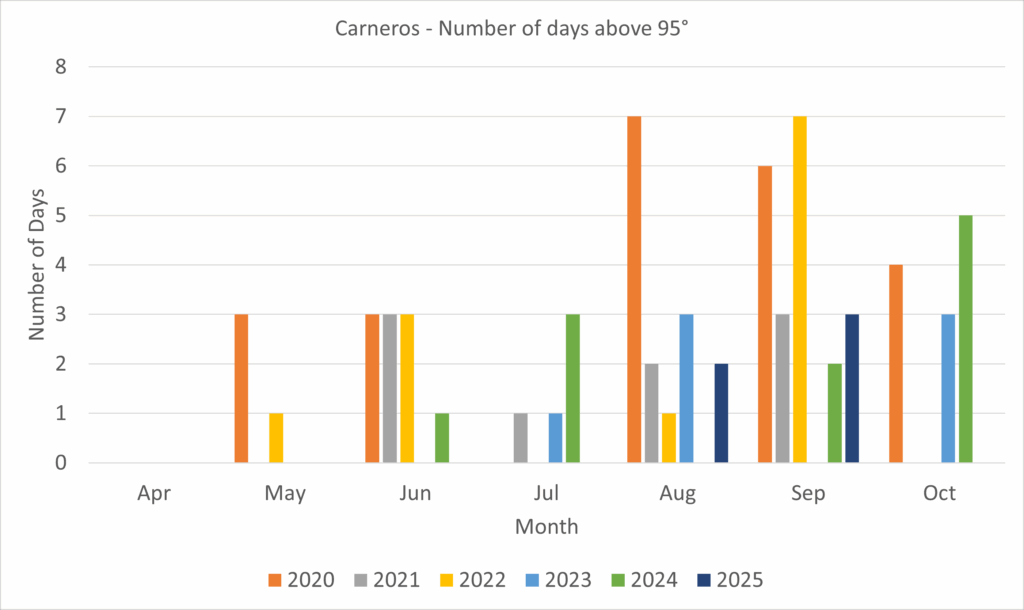
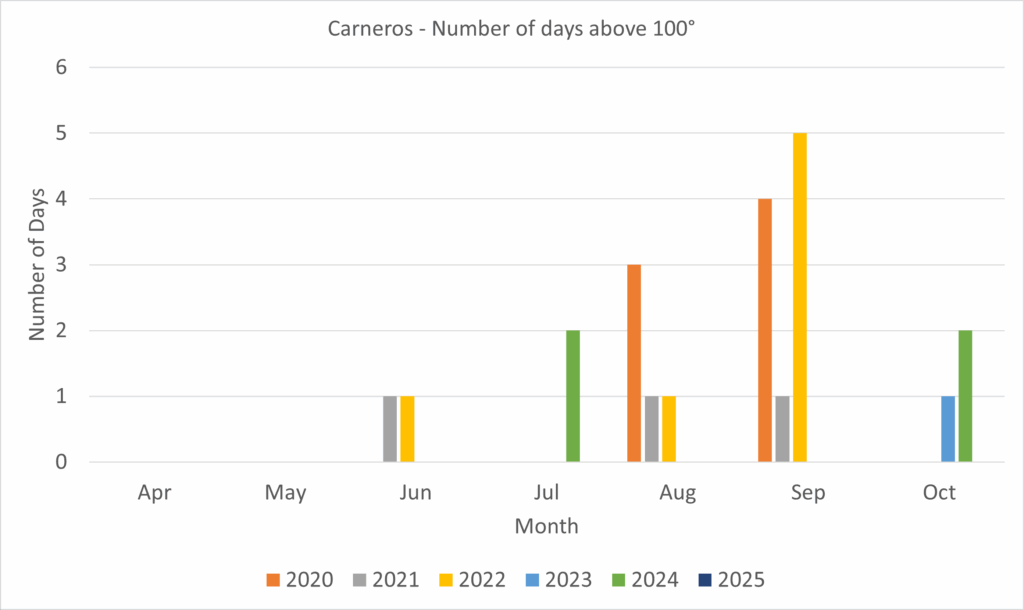
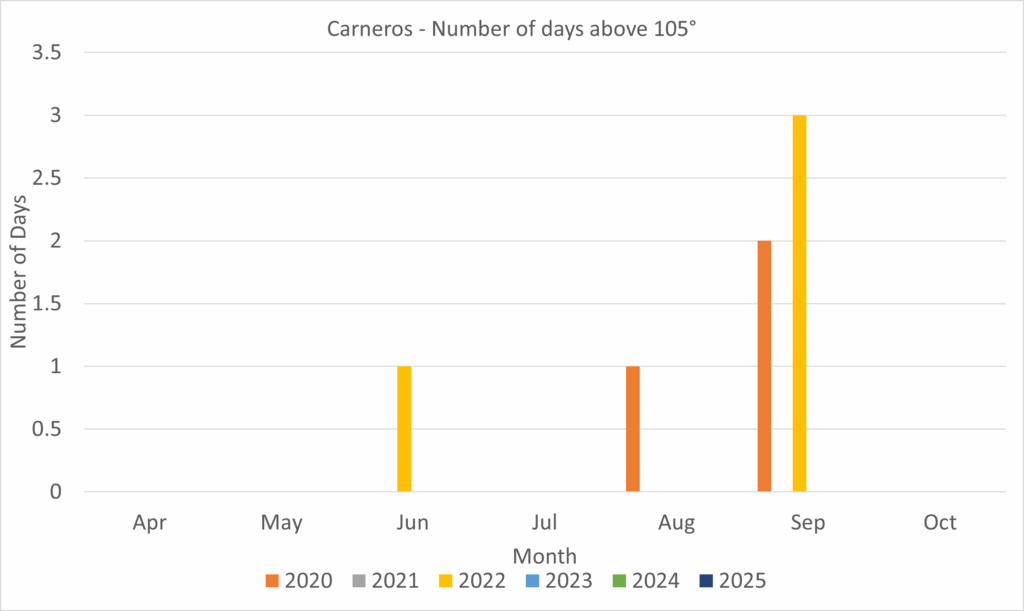
Paso Robles also had more mild than usual weather. West Paso enojoyed some cooler temperatures.
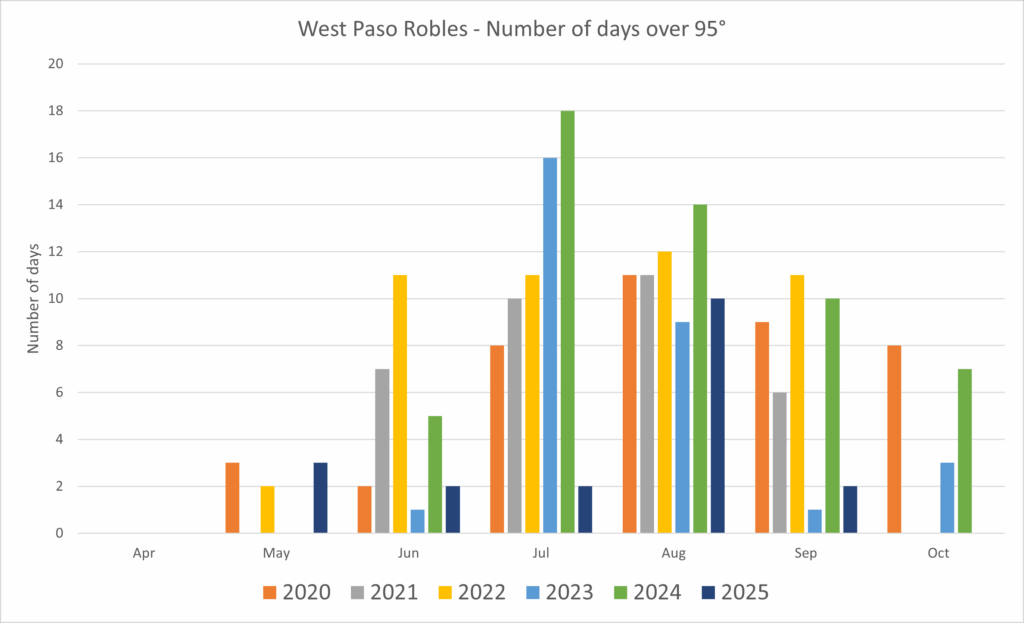
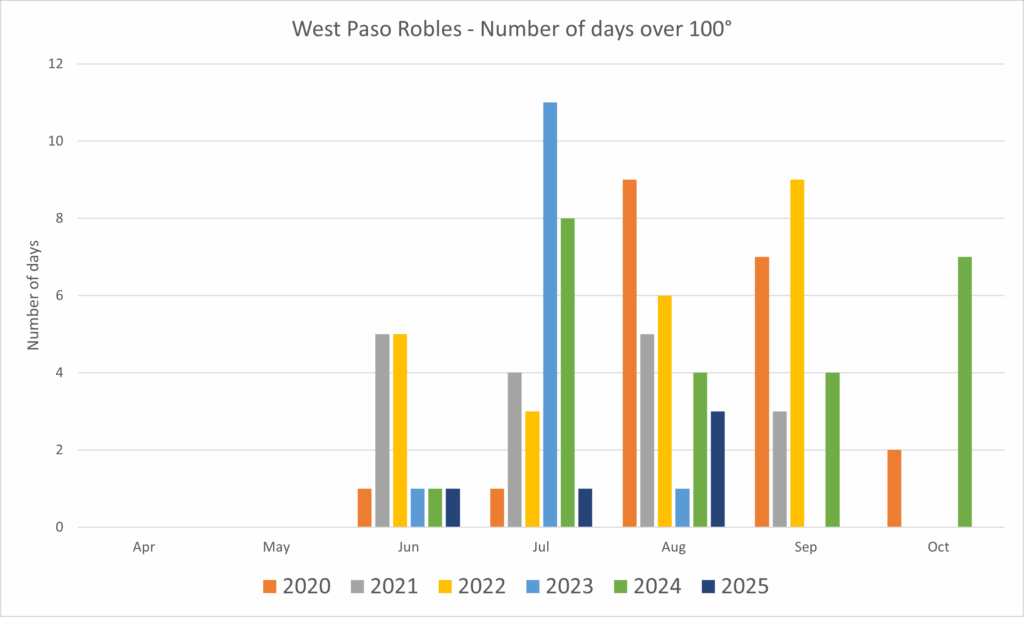
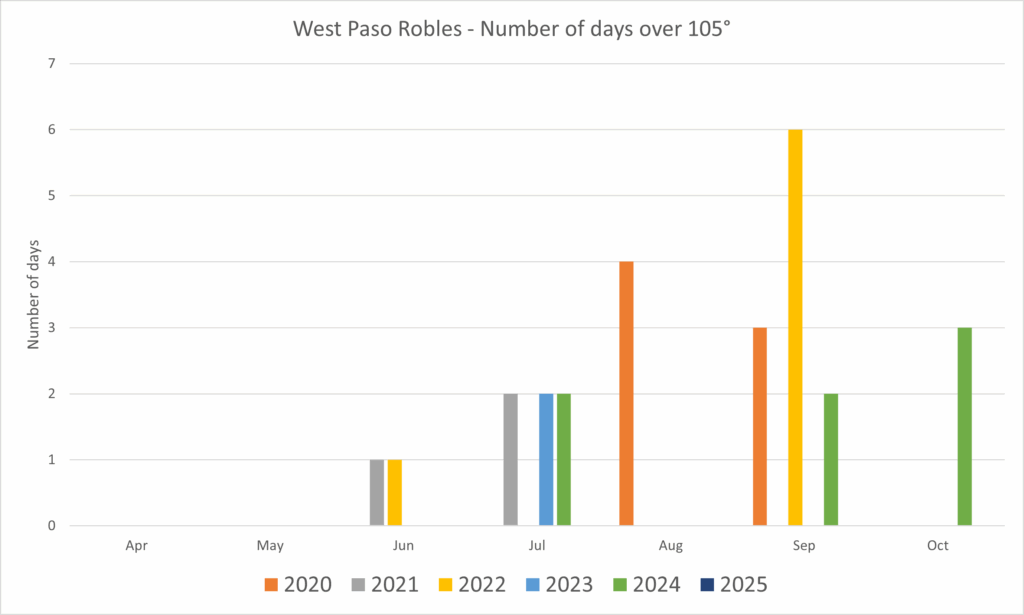
As did East Paso Robles, which tends to run hotter.
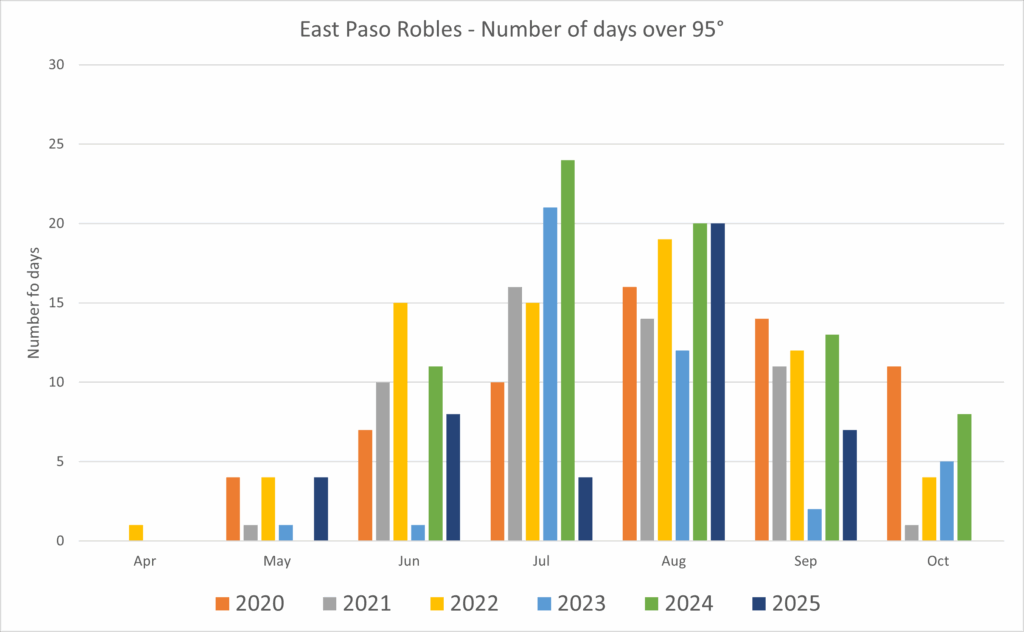
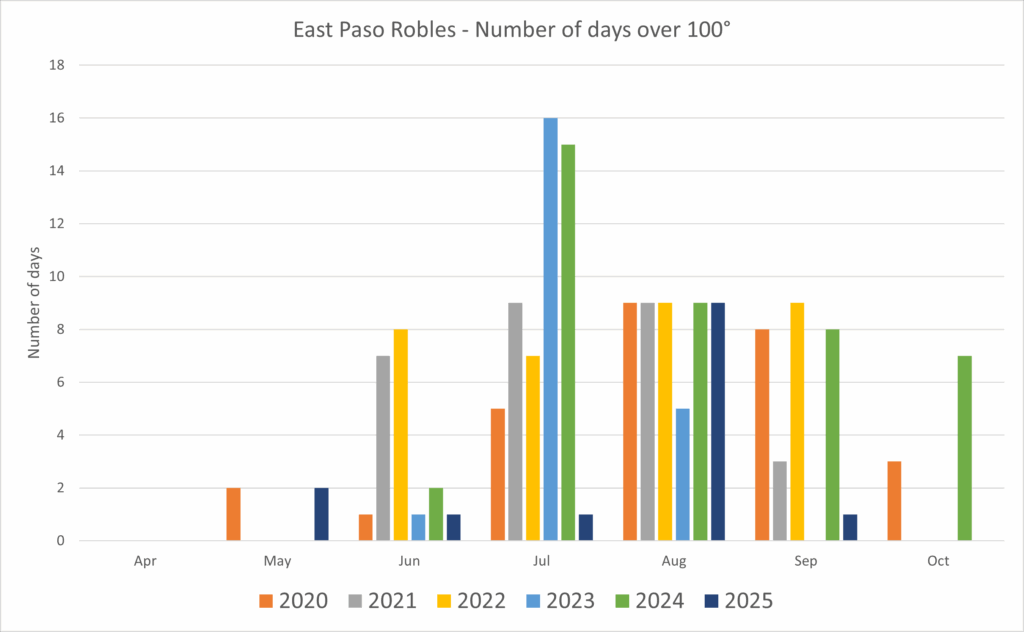
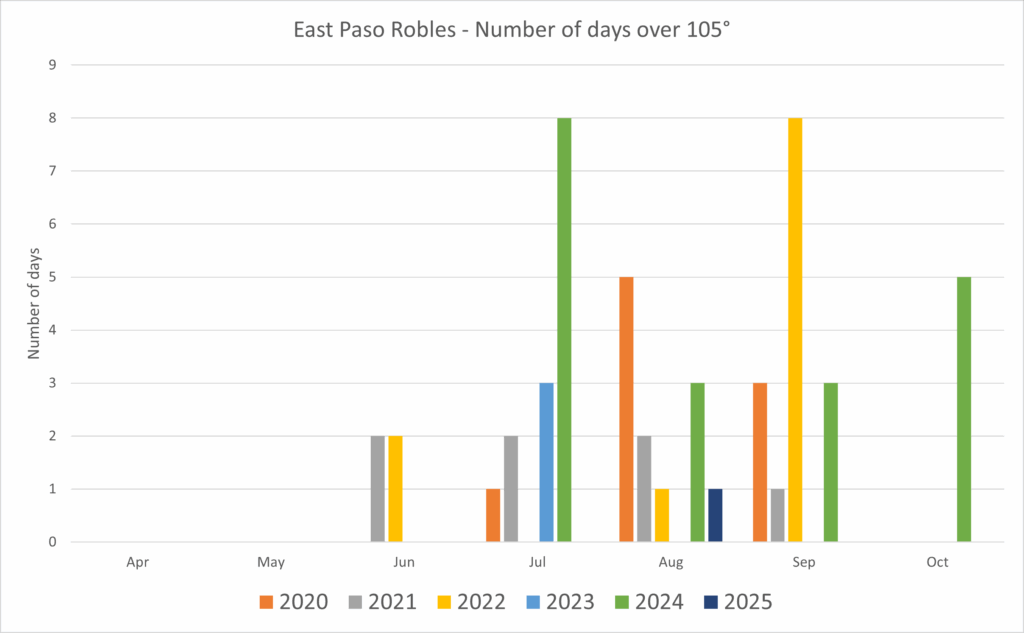
Fire on the mountain
Looking at some of the growing degree day accumulation charts, 2025 is looking a little like 2020 but without the devastating Glass Fire that took out most of the vintage in the North Coast. We did get a couple fires that may pose a problem for some parts of California. However, the effect is more localized than in previous years.
Extra innings
While the Pinot and Chardonnay are in the tank, some red growers are still waiting to pull the trigger. 2023 was so markedly cold that some late season varietals didn’t even get ripe. This year however, these grapes are well on their way to ripening and cool weather (with even a little rain!) means less dehydration and less late season shrivel.
Does the innings analogy work? …sports.
In sum
High disease pressure with great wine that no one wants to drink? I feel like I’m back in Europe. For many reasons, this is a vintage to lay down and open up during what we hope will be better times.
All data in this article is from the Western Weather Group.

